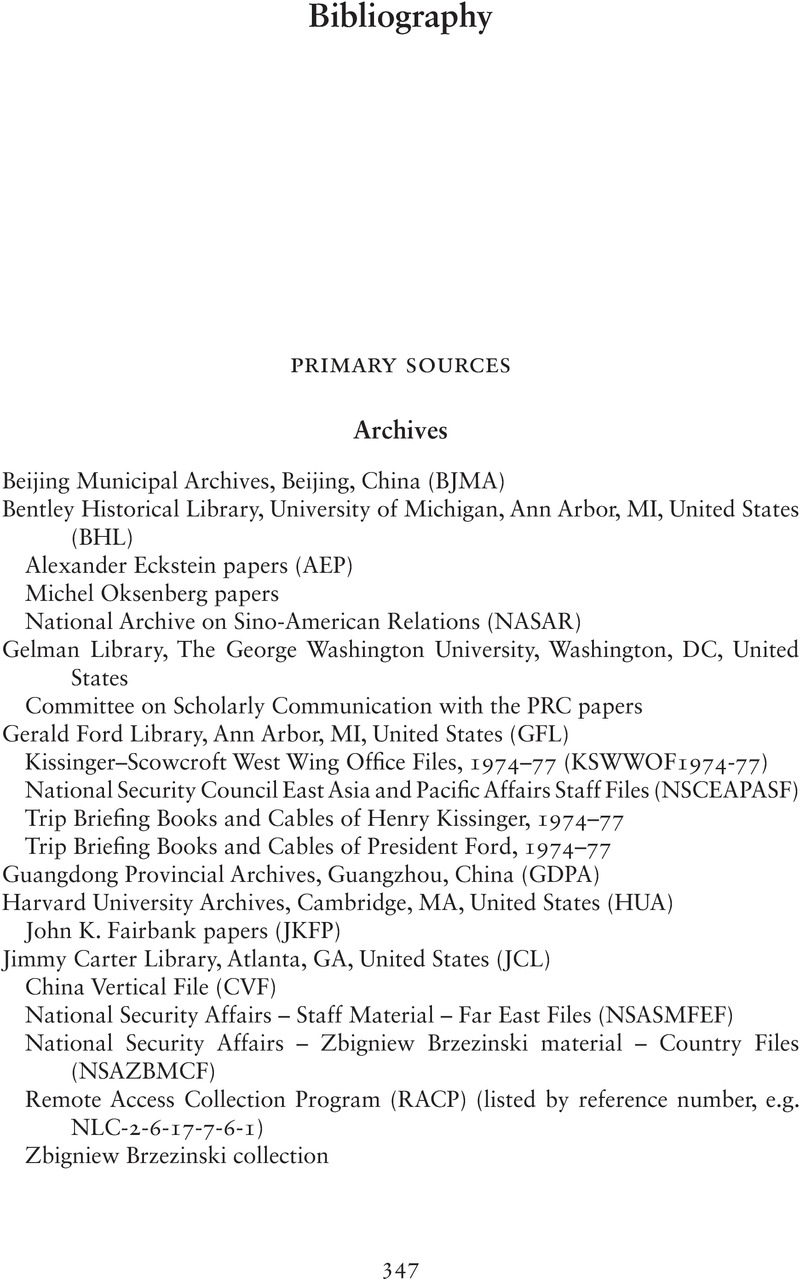Book contents
- Improbable Diplomats
- Cambridge Studies in US Foreign Relations
- Improbable Diplomats
- Copyright page
- Contents
- Figures
- Acknowledgments
- Abbreviations
- Introduction
- Prologue
- 1 By Popular Demand
- 2 Ping-Pong Diplomacy’s Return Leg and After
- 3 New Liaisons
- 4 Familiarity Breeds Contempt
- 5 Asking for More in Exchange
- 6 Political Science
- Epilogue
- Conclusion
- Bibliography
- Index
- References
Bibliography
Published online by Cambridge University Press: 15 December 2022
- Improbable Diplomats
- Cambridge Studies in US Foreign Relations
- Improbable Diplomats
- Copyright page
- Contents
- Figures
- Acknowledgments
- Abbreviations
- Introduction
- Prologue
- 1 By Popular Demand
- 2 Ping-Pong Diplomacy’s Return Leg and After
- 3 New Liaisons
- 4 Familiarity Breeds Contempt
- 5 Asking for More in Exchange
- 6 Political Science
- Epilogue
- Conclusion
- Bibliography
- Index
- References
Summary

- Type
- Chapter
- Information
- Improbable DiplomatsHow Ping-Pong Players, Musicians, and Scientists Remade US-China Relations, pp. 347 - 362Publisher: Cambridge University PressPrint publication year: 2022



